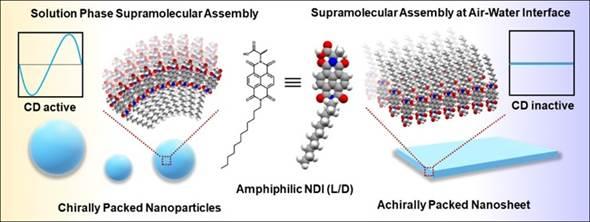Breakthrough in Biomedicine: Pioneering Nanostructure Assembly Technique Emerges
The field of nanotechnology has seen significant advancements in recent years, particularly in the realm of biomedicine and electronics. A team of Indian researchers from the Centre for Nano and Soft Matter Sciences (CeNS) and Jawaharlal Nehru Centre for Advanced Scientific Research (JNCASR), Bengaluru, have developed a new method to create nanostructures for use in these fields. The process, known as supramolecular self-assembly, involves small molecules spontaneously organizing into larger, well-defined structures without external direction. This understanding is crucial for creating new organic materials that can be used to develop nanodevices, tiny machines useful for performing specific tasks at the molecular level.
The researchers explored the self-assembly behavior of specific molecules called chiral amphiphilic naphthalene diimide derivatives (NDI-L and NDI-D). They experimented with two different methods of assembling these molecules — solution-phase assembly and air-water interface assembly. The solution phase involved assembling molecules in a liquid solution, leading to the formation of spherical nanoparticles with unique optical properties. On the other hand, the air-water interface assembly involved the assembling of molecules at the boundary between air and water, resulting in the formation of flat, two-dimensional layers with irregular edges. This indicates that the environment in which molecules assemble plays a critical role in determining their final structure and properties.
The study opens up exciting possibilities for creating new materials with tailored properties. Such materials could be used to develop more effective drug delivery systems in the field of biomedicine. These systems can help target specific areas of the body. In electronics, the materials could lead to the development of faster, more efficient devices. This breakthrough in understanding how to control the assembly of tiny molecular units into complex structures could revolutionize industries such as electronics and healthcare. In addition to the primary source of information, several other relevant news sources provide further insights into the advancements in nanotechnology. For instance, a study discovered a method to create nanostructures for biomedicine and electronics, achieving a breakthrough in understanding how to control the assembly of tiny molecular units into complex structures. This advancement could revolutionize industries such as electronics and healthcare.

Another study explored the self-assembly behavior of specific molecules in a liquid solution, leading to the formation of spherical nanoparticles with unique optical properties. These properties are important for materials that interact with light in precise ways. On the other hand, the air-water interface assembly involved the assembling of molecules at the boundary between air and water, resulting in the formation of flat, two-dimensional layers with irregular edges.
In the field of nanotechnology, clear nanoscale films for displays, eyeglasses, and windows have been developed to improve waterproofing, enhance self-cleaning capabilities, improve electrical conductivity, and protect against UV radiation. Nanoscale materials in automotive components such as low rolling-resistance tires, thin-film smart solar panels, and battery systems have also been developed. Mechanically flexible electronics which can withstand mechanical deformation for use in wearable electronics, medical applications, IoT devices, and smartphones have been created. Targeted drug delivery using nanocapsules for improved treatment of diseases such as cancer with minimal side effects has been achieved.
Advancements in nanotechnology and biomedicine have opened up new avenues for the development of more efficient and effective devices and systems. The ability to manipulate molecules at the nanoscale and create structures with tailored properties holds immense potential for revolutionizing various industries, from healthcare to electronics. The ongoing research and development in this field promise a future where nanotechnology plays a crucial role in improving the quality of life and advancing human knowledge.


Comments are closed.